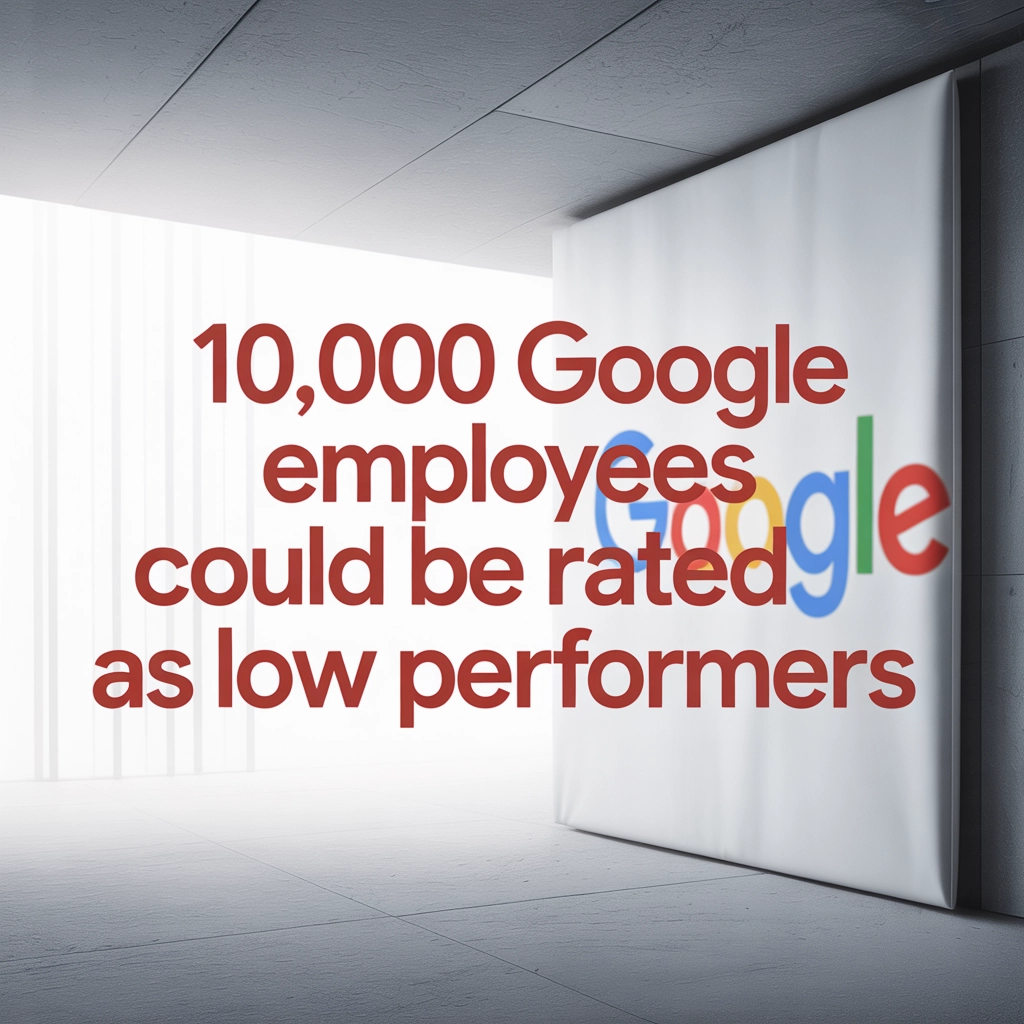Google's Big Shift: A Tougher Performance Review System
Google has always had a reputation for treating its employees well—relaxed offices, free food, cool perks, and, for the most part, solid job security. But things took a turn starting in 2022, when Google quietly launched a major overhaul of how it evaluates employees. Suddenly, the company best known for moonshot ideas and supportive managers started asking a tough question: What happens when Google thinks you just aren’t keeping up?
The answer? A new performance review system called GRAD (Google Reviews and Development), meant to push more employees into the dreaded “low performer” category—and not just by a little. Under the new plan, about 6% of Google’s workforce—roughly 10,000 people—could be tagged with a low performance rating each year. That’s triple the previous benchmark (2%).

What Is GRAD and Why Did Google Roll It Out?
For years, Google’s performance management style was pretty chill. If you got a “Needs Improvement” or “Poor” rating, it was rare, and usually came with support to turn things around. But suddenly, there was a shift:
-
GRAD introduced a new rating scale, including “moderate impact”—which is the second-lowest score. Translation: You did your job, but not well enough for Google’s expectations.
-
Managers now have to hit targets for how many team members fit into each rating slot. On paper, it’s just a guideline, but in reality, it means some people will get a lower score simply because someone has to.
-
Poor performance doesn’t just stick on your employee record—at Google, it can mean a smaller raise or bonus, a miss on stock grants, or even a one-way ticket to a performance improvement plan.
The bottom line: Google wanted to get leaner and meaner, and it decided a little pressure through reviews was the way to start. It’s a departure from their softer approach, but increasingly common across Big Tech.
What Got Google Here? (Spoiler: Investors and Cost Cutting)
The 2022–2025 time frame wasn’t exactly a party for the tech industry. Between a wobbly economy, slowing advertising revenue, and a tech talent glut, investors started asking tough questions about bloated payrolls and efficiency.
A big turning point came thanks to Christopher Hohn, a hedge fund manager and vocal Google shareholder. According to his calculations, Google could easily trim tens of thousands of employees and still run just fine (“bloated workforce” was the actual phrase).
Many rivals had already started sharpening the axe:
- Meta (Facebook) cut 5% of its workforce by labeling them “low performers.”
- Amazon and Twitter had staff reductions by the thousands.
- Microsoft started using performance ratings more aggressively to decide who stayed.
Google, once immune, suddenly couldn’t ignore the pressure.
How It Works: The New Performance Tiers
The new GRAD system splits employees into categories:
- Top Performers: The high-flyers, as always.
- Solid Contributors: Doing well, consistent, steady.
- Moderate Impact: Where things start getting dicey. These folks "weren’t at the standards expected."
- Low Performers: The bottom 6%. Up from the old 2%.
If you land in the “moderate” or “low” camp, you’re going to feel it: smaller bonuses, a loss of stock options, and possibly a warning that if things don’t improve fast, your role isn’t safe.

Managers are “expected” (read: pressured) to fill these buckets roughly in line with the guidelines, even if that means ranking someone as a low performer just to make the numbers work.
A New Era for Layoffs: Performance Review as a Cost-Cutting Tool
Unlike the classic layoff—which comes as an email from HR and a cardboard box—using performance reviews as a tool for headcount reduction offers a nice fig leaf for companies. They can say, “We’re only keeping our best!” instead of “We’re just cutting costs.”
This is attractive for a bunch of reasons:
- No headlines about mass layoffs—at least not as dramatic as thousands let go in a single day.
- Encourages employees to work harder (or at least be more competitive), which could drive short-term productivity.
- Reduces legal risk and bad press compared to slashing teams outright.
But for employees, it creates a new kind of anxiety. Even if you’re a solid worker, you might get hit simply because someone on your team has to get a bad rating, whether or not they deserve it.
The Employee Perspective: Anxiety Levels to the Moon
Not surprisingly, Google’s own forums and private chat groups blew up when the new system was announced. People started to wonder:
- Is my job safe even if I’m doing a good job?
- Will my raise be smaller, even if my performance hasn’t changed?
- Are these “forced rankings” just layoffs dressed up as something else?
Some Googlers complained that the new structure pitted employees against each other. If only 6% can get the lowest rating, it doesn't matter if everyone on the team is crushing it—someone is going to get the short straw.

And for a company that built its reputation on collaboration and open-minded innovation, a new system built on relative ranking felt like a big culture shift.
The Broader Industry Trend
Let’s be clear: this isn’t just a Google thing. Most of Big Tech now uses performance reviews and stack ranking to quietly manage headcount. There were nearly 300,000 tech layoffs in the U.S. alone between 2022 and 2025. Giants like Meta, Amazon, Twitter, Microsoft, and Salesforce all started using similar tools and “improvement plans” to keep the best and quietly exit the rest.
In many ways, this marks the end of the cushy, no-pressure tech job. Now, even top coders or designers can suddenly find themselves looking over their shoulder.
What’s Next—Culture and Talent Impacts
For Google, the new performance system ushers in a “new normal.” The company still invests in cool research and moonshot projects, but workers are under more pressure to perform and to stand out, not just in what they deliver but in how they compare to everyone else.
Going forward:
- Employees will be less likely to coast on old wins.
- Risk-taking and collaboration could take a back seat to competition.
- Top talent may start thinking twice about joining—or staying—if they worry about constant performance pressure.
- Investors are paying close attention—and other companies may follow if Google's results look promising.

Final Thoughts
In the end, Google’s move to brand up to 10,000 employees a year as “low performers” isn’t just about employee output—it’s about signaling to Wall Street that the company is serious about operating lean, agile, and focused. Whether this new era makes Google stronger or just more anxious remains to be seen. But one thing’s for sure: the age of automatic job security at Google is officially over.
What do you think—fair move or just a roundabout layoff system? Would you want to work under these rules? Sound off below!







